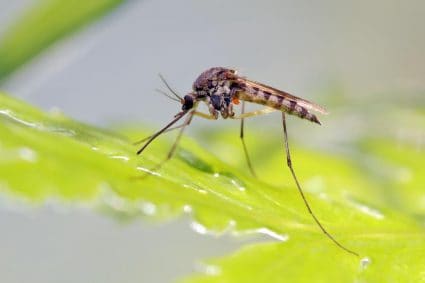
Barn swallows can be charming creatures to observe from a distance with their swift aerial acrobatics and vibrant colors. However, when they decide to nest in your barn, they can quickly become a nuisance due to their droppings, noise, and potential health risks. If you’re struggling with this issue, this comprehensive guide will provide you with various methods on how to keep barn swallows away.
To keep barn swallows away, consider installing physical barriers such as bird netting or spikes, use sound and visual deterrents, maintain cleanliness and sanitation in your barn, and apply liquid bird repellent sprays. However, remember that barn swallows are protected under the Migratory Bird Treaty Act of 1918, so any deterrent methods should be humane and non-disruptive.
The Barn Swallow Problem
Barn swallows are known for their habit of building nests close to human structures, such as homes, barns, and sheds. While their insect-eating habits can benefit the local ecosystem, their nests can lead to property damage and health risks. Swallow droppings and nests can carry diseases such as histoplasmosis, encephalitis, and other infections, posing a threat to human health [^1^]. Additionally, their droppings can create slippery surfaces, leading to potential slip-and-fall hazards.
Legal Considerations
Before implementing any methods to deter barn swallows, it’s crucial to be aware of the legal implications. In the United States, barn swallows are protected under the Migratory Bird Treaty Act of 1918. This law prohibits the capture, killing or disruption of any migratory bird, their nests, or eggs [^2^]. Therefore, any method used to deter these birds should be humane and non-disruptive.
Humane and Effective Deterrent Methods
Physical Barriers
Physical barriers are an effective way to prevent barn swallows from building nests. Consider installing bird netting, sheet metal, or bird spikes on ledges and eaves where swallows may attempt to build nests.
Sound Deterrents
Birds are sensitive to sound, and high-frequency ultrasonic noise devices can be an effective way to drive swallows away. These devices emit sounds that are unpleasant to swallows but are typically inaudible to humans.
Visual Deterrents
Visual deterrents like hanging reflectors, bird scare balloons, or bird scare diverters can make swallows nervous and deter them from nesting. These devices often feature large predator eyes or shiny reflective surfaces that frighten swallows.
Cleanliness and Sanitation
Keeping your barn and surrounding area clean can deter swallows from nesting. Regularly remove potential nesting materials like straw, hay, and twigs, and wash away bird droppings and nesting debris before installing any bird control products.
Liquid Bird Repellent Sprays
Liquid bird repellent sprays can irritate a bird’s sense of taste and smell, driving swallows away from your property. These sprays can be applied to areas where swallows often perch or attempt to build nests.
Balancing Ecology and Deterrence
While it’s important to deter nuisance swallows, it’s equally crucial to maintain ecological balance. Barn swallows play a vital role in controlling insect populations and serve as an indicator of environmental health. Therefore, any deterrent methods should be balanced with measures that support the local bird population. Consider providing artificial nesting structures or maintaining a bird-friendly garden to provide alternative habitats for swallows.
Conclusion
Dealing with barn swallows can be a challenge, but with the right information and tools, you can effectively and humanely keep them away from your barn. Remember to always abide by local laws when implementing deterrent methods and consider professional help if the problem persists.
Frequently Asked Questions
What time of the year do barn swallows usually nest?
Barn swallows typically nest during spring and summer, usually starting in late April or early May and continuing through August.
How long does it take for barn swallow eggs to hatch?
Once laid, barn swallow eggs usually take about 13 to 17 days to hatch.
What other birds can be deterred using the methods described in the blog post?
Besides barn swallows, these methods can also be effective against other types of birds that are known to nest in human structures, such as sparrows, starlings, and pigeons.
Are there any potential side effects to using liquid bird repellent sprays?
Liquid bird repellent sprays are designed to be safe for birds, people, and pets. However, they can cause irritation if they come into contact with eyes or skin. Always follow the manufacturer’s instructions when using these products.
How often should I clean my barn to prevent swallows from nesting?
Regular cleaning is key to keeping barn swallows at bay. It’s recommended to clean your barn at least once a week, removing potential nesting materials and washing away any bird droppings or nesting debris.
What should I do if the barn swallows keep returning despite implementing these deterrent methods?
If you’ve implemented these methods and barn swallows continue to be a problem, consider seeking professional help. Pest control companies often offer bird control services and can provide more intensive solutions.












